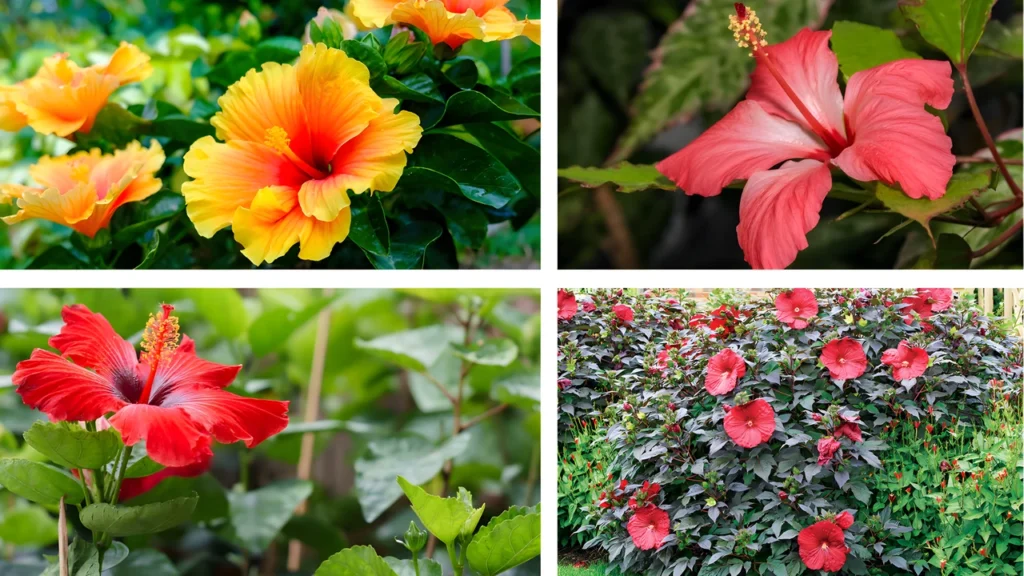Join on WhatsApp
Get the latest updates directly on WhatsApp – motivation, news & more!
If you’re looking for a plant that adds instant charm, color, and tropical beauty to your garden or balcony, hibiscus is a top contender. Learning how to grow and care for hibiscus properly can reward you with lush foliage and eye-catching blooms that flourish for months. Whether you’re a first-time gardener or a seasoned plant lover, this blooming guide will teach you everything you need to grow and care for hibiscus successfully—from choosing the right variety and soil to proper watering, pruning, and pest management. With consistent attention and the right techniques, you can enjoy vibrant, healthy hibiscus flowers all season long.

1. Understanding Hibiscus: Types and Growth Habits
Before diving into the steps on how to grow and care for hibiscus, it’s helpful to understand the plant’s nature. Hibiscus is a genus of flowering plants with hundreds of species, but most gardeners choose between tropical hibiscus (Hibiscus rosa-sinensis) and hardy hibiscus (Hibiscus moscheutos).
- Tropical hibiscus thrives in warm climates and produces glossy leaves and large, bright flowers. It does not tolerate frost.
- Hardy hibiscus is more cold-tolerant and can survive winters in zones as low as 4.
Each type has its own specific needs, but the general principles of how to grow and care for hibiscus remain similar. Identifying the type you’re growing helps tailor your care routine for optimal results.
2. Selecting the Right Spot to Grow and Care for Hibiscus
Location is key when you grow and care for hibiscus. These plants crave sunlight and require at least 6 to 8 hours of direct sun per day to produce abundant flowers. Choose a well-lit spot in your garden, balcony, or windowsill.
For outdoor planting:
- Place hibiscus where it is protected from strong winds.
- Avoid low-lying areas that may cause root rot due to water accumulation.
For containers:
- Use pots with drainage holes.
- Move tropical hibiscus indoors during colder months.
Getting the location right is the first essential step to grow and care for hibiscus the right way.
3. Soil Preparation and Fertilizing for Healthy Hibiscus Growth
To effectively grow and care for hibiscus, preparing the right soil is fundamental. Hibiscus plants prefer well-draining, slightly acidic soil with a pH between 6.0 and 6.8. The soil should be rich in organic matter to support strong root development and vibrant blooms.
Here’s a breakdown in a simple table:
Ideal Soil Conditions to Grow and Care for Hibiscus
| Soil Element | Ideal Condition |
|---|---|
| Soil pH | 6.0 – 6.8 |
| Texture | Loamy, well-draining |
| Organic Matter | High (add compost or leaf mold) |
| Drainage | Excellent (prevent soggy roots) |
| Fertilizer Type | Balanced (10-10-10 or 20-20-20 NPK) |
Apply a slow-release fertilizer in early spring and continue feeding every 4-6 weeks during the growing season. Use a formula that promotes flowering rather than leafy growth.
4. Watering Tips to Grow and Care for Hibiscus
Proper watering is a core part of how to grow and care for hibiscus. These plants are thirsty but don’t like wet feet. Striking the right balance is essential.
General Watering Guidelines:
- Tropical hibiscus: Needs frequent watering, especially in hot weather—daily in summer.
- Hardy hibiscus: Tolerates slightly drier conditions but still prefers consistent moisture.
- Container-grown hibiscus: May require watering twice a day during extreme heat.
Let the top inch of soil dry out between waterings, and always water at the base of the plant to avoid fungal issues. Keeping your hibiscus well-hydrated is a non-negotiable part of growing and caring for it.
5. Pruning and Deadheading to Care for Hibiscus Plants
If you want continuous, vibrant blooms, pruning is a must in your routine to grow and care for hibiscus. Regular pruning encourages bushier growth and more flower production.
Pruning Tips:
- Prune in early spring before new growth appears.
- Remove dead or crossing branches.
- Cut back leggy stems to promote bushiness.
Deadheading—or removing spent flowers—is also essential. This prevents the plant from focusing energy on seed production and encourages new blooms.
Pruning and deadheading are often overlooked steps but play a big role when learning how to grow and care for hibiscus effectively.
6. Pest and Disease Management for Healthy Hibiscus Flowers
No guide on how to grow and care for hibiscus is complete without addressing pests and diseases. Hibiscus is relatively resilient but can be affected by a few common problems:
Common Hibiscus Pests:
- Aphids
- Spider mites
- Whiteflies
- Mealybugs
These pests suck the sap and weaken the plant. Use neem oil or insecticidal soap as organic remedies. Regularly inspecting leaves (especially the undersides) helps prevent infestations.
Common Hibiscus Diseases:
- Leaf spot
- Root rot
- Powdery mildew
Ensure good airflow around the plant, avoid overwatering, and remove infected leaves immediately.
Managing these challenges is crucial to successfully grow and care for hibiscus and keep flowers blooming beautifully.
7. Growing Hibiscus in Pots: Container Care Tips
If space is limited or you live in a colder region, container gardening is a great way to grow and care for hibiscus. Potted hibiscus can thrive on patios, balconies, or indoors near a sunny window.
Container Care Essentials:
- Use a pot at least 12–14 inches in diameter.
- Add a layer of gravel at the bottom for better drainage.
- Repot annually or when roots outgrow the container.
Container plants may need more frequent watering and feeding, especially in hot weather. If you grow and care for hibiscus in pots, bring them indoors when temperatures drop below 50°F (10°C).
8. Seasonal Care: How to Grow and Care for Hibiscus Year-Round
Seasonal changes require you to adjust your approach to grow and care for hibiscus. Here’s what to do through the seasons:
- Spring: Prune, fertilize, and repot if needed.
- Summer: Water deeply, deadhead regularly, and feed every 4-6 weeks.
- Fall: Reduce feeding and watering slightly.
- Winter: Tropical hibiscus must be brought indoors. Hardy varieties can be mulched heavily.
Adapting your care routine with the seasons ensures healthy growth and extended blooming, which is a vital part of how to grow and care for hibiscus throughout the year.
9. Propagating Hibiscus for More Blooms
Propagation is a rewarding method when you’ve learned how to grow and care for hibiscus and want more plants. The most common method is through stem cuttings.
How to Propagate Hibiscus:
- Take a 5–6 inch cutting from a healthy branch.
- Remove lower leaves and dip the cut end in rooting hormone.
- Plant in a moist potting mix and cover with plastic to maintain humidity.
- Keep in indirect light until roots develop (2–4 weeks).
Once rooted, the new plant can be repotted or transplanted into the garden. Propagation is a great way to multiply your success in growing and caring for hibiscus.
How to Grow and Care for Hibiscus: Final Thoughts for Blooming Success
In conclusion, learning how to grow and care for hibiscus is the gateway to enjoying vibrant, healthy flowers that brighten up any space. By understanding the specific needs of your hibiscus variety and following proper practices in sunlight exposure, watering, soil preparation, pruning, pest control, and seasonal care, you set the foundation for thriving blooms. Whether in the ground or containers, hibiscus rewards gardeners who commit to attentive care. With this blooming guide, you’re now equipped to grow and care for hibiscus like a pro—bringing continuous color and life to your home or garden.


